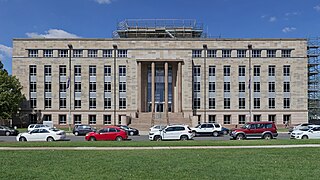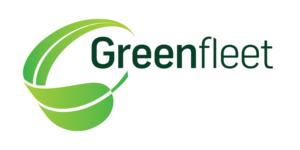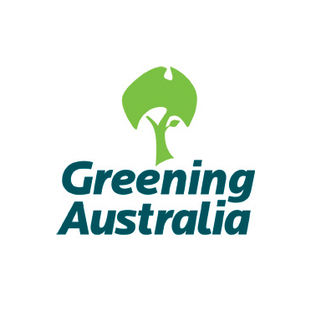 W
WConservation in Australia is an issue of state and federal policy. Australia is one of the most biologically diverse countries in the world, with a large portion of species endemic to Australia. Preserving this wealth of biodiversity is important for future generations.
 W
WThreatened fauna of Australia are those species and subspecies of birds, fish, frogs, insects, mammals, molluscs, crustaceans and reptiles to be found in Australia that are in danger of becoming extinct. This list is the list proclaimed under the Australian federal Environment Protection and Biodiversity Conservation Act 1999. The classifications are based on those used by the World Conservation Union (IUCN), however IUCN and Australian rankings do differ. Each state and territory has its own legislation relating to environmental protection]].
 W
WThe Australian Heritage Council is the principal adviser to the Australian Government on heritage matters. It was established on 19 February 2004 by the Australian Heritage Council Act 2003. The Council replaced the Australian Heritage Commission as the Australian Government's independent expert advisory body on heritage matters when the new Commonwealth heritage system was introduced in 2004 under amendments to the Environment Protection and Biodiversity Conservation Act 1999. The Council assesses nominations for the Australian National Heritage List and the Commonwealth Heritage List. The Minister may ask the Council for advice on action that he may take in relation to the List of Overseas Places of Historic Significance to Australia.
 W
WThe Burra Charter defines the basic principles and procedures to be followed in the conservation of Australian heritage places.
 W
WBush Heritage Australia is a non-profit organisation based in Melbourne, Australia, that operates throughout Australia. It was previously known as the Australian Bush Heritage Fund, which is still its legal name. It purchases land, assessed as being of outstanding conservation value, from private owners, to manage as wildlife reserves in perpetuity. It also partners with existing land owners, including Aboriginal groups, to help plan and manage conservation work of important landscapes. It does so to protect endangered species and preserve Australia's biodiversity. By 2019 the organisation was contributing to the protection of 11.3 million hectares on its reserves and partnership lands. There were 6,359 Australian species recorded on their reserves and partnership properties, including 243 threatened species.
 W
WThe Department for Environment and Water (DEW) is a department of the Government of South Australia. Created on 1 July 2012 by the merger of the Department of Environment and Natural Resources and the Department for Water as the Department of Environment, Water and Natural Resources (DEWNR), it was given its present name on 22 March 2018. It is responsible for ensuring that South Australia's natural resources are managed productively and sustainably, while improving the condition and resilience of the state's natural environment.
 W
WThe Environment Protection and Biodiversity Conservation Act 1999, long title An Act relating to the protection of the environment and the conservation of biodiversity, and for related purposes, is an Act of the Parliament of Australia that provides a framework for protection of the Australian environment, including its biodiversity and its natural and culturally significant places. Enacted on 17 July 2000, it established a range of processes to help protect and promote the recovery of threatened species and ecological communities, and preserve significant places from decline. The EPBC Act is as of June 2020 administered by the Department of Agriculture, Water and the Environment. Lists of threatened species are drawn up under the Act, and these lists, the primary reference to threatened species in Australia, are available online through the Species Profile and Threats Database (SPRAT).
 W
WThe Flora and Fauna Guarantee Act 1988, also known as the FFG Act, is an act of the Victorian Government designed to protect species, genetic material and habitats, to prevent extinction and allow maximum genetic diversity within the Australian state of Victorian for perpetuity. It was the first Australian legislation to deal with such issues. It enables the listing of threatened species and communities and threats to native species, and the declaration of critical habitat necessary for the survival of native plants and animals.
 W
WGreenfleet is an Australian not-for-profit environmental organisation whose mission is to protect the climate by restoring forests.
 W
WGreening Australia is an Australian environmental organisation, founded in 1982, the International Year of the Tree, to protect, restore and conserve Australia's native vegetation. Greening Australia was formed by the United Nations Association of Australia and the Nursery Industry Association of Australia.
 W
WProtected areas of South Australia consists of protected areas located within South Australia and its immediate onshore waters and which are managed by South Australian Government agencies. As of March 2018, South Australia contains 359 separate protected areas declared under the National Parks and Wildlife Act 1972, the Crown Land Management Act 2009 and the Wilderness Protection Act 1992 which have a total land area of 211,387.48 km2 (81,617.16 sq mi) or 21.5% of the state's area.
 W
WWIRES Wildlife Rescue is the largest wildlife rescue & rehabilitation charity in Australia. It is a non-profit organisation providing rescue and rehabilitation for all native Australian fauna. All animal rescuers and carers are volunteers. It is funded by public donations and operates throughout the most populous Australian state, New South Wales.